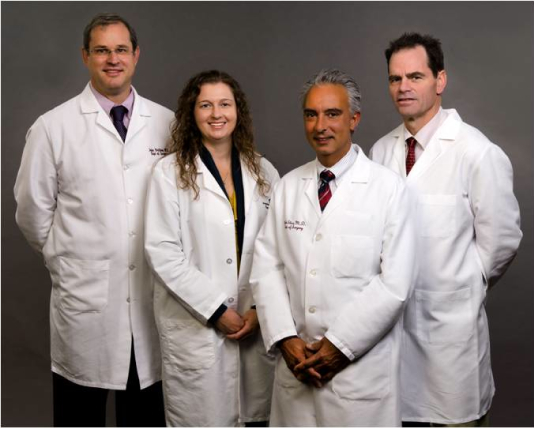Rochester, New Hampshire based Frisbie Memorial Hospital is now using low-dose CT scanning as a follow-up tool for colorectal cancer screening. The hospital says the procedure does not replace conventional colonoscopy as the most reliable and effective colorectal cancer screening alternative, but rather compliments it as a follow-up means of obtaining additional images showing the status of the patient’s colon and rectum.
According to the American Cancer Society (ACS), colorectal cancer (commonly known as just colon cancer) is the third leading cause of cancer-related deaths in the United States among men and women, and is expected to cause about 49,700 deaths during 2015. However, research indicates that routine screening starting at age 50 can actually prevent many cases of colorectal cancer, or find it at an early stage when treatment is most likely to be successful. If found and treated early, the 5-year survival rate for colorectal cancer is 90 percent. However, because so many people are not getting tested, only about four out of 10 colorectal cancer cases are diagnosed in their early stages.
CT stands for Computerized Tomography — a type of X-ray testing that generates a detailed view of the anatomy or structure of organs and tissues in the body. The CT scan can show the dimension of vessels, lymph nodes and organ systems.
Virtual colonoscopy (VC), also called computerized tomography (CT) colonography, uses a combination of x rays and computer technology to create images of the rectum and entire colon. Virtual colonoscopy can detect and provide imagery of irritated and swollen colon tissue, ulcers, and polyps — lesions of tissue that grow on the lining of the intestine.
Virtual colonoscopy is done in the radiology department of a hospital or medical center. No sedatives are needed and no colonoscope is used. Conventional colonoscopy is more invasive, using a long, flexible, narrow tube with a light and tiny camera on one end, called a colonoscope or “scope,” to directly observe inside the rectum and entire colon. The procedure also requires sedation of the patient.
Frisbie Memorial Hospital was first institution all North America to install the GE Optima CT660 128-slice scanner, which features GE’s ASiR radiation dose reduction system, which hospital spokespersons say enables them to provide the safest, lowest radiation dose of available CT scans available in the Atlantic Seacoast region — a 40 percent radiation dose reduction. In addition to the GE Optima CT660, Frisbie Memorial’s 16-slice GE Lightspeed CT scanner is equipped with CT Fluoro to accommodate biopsies, which can be performed in less than one hour.
Virtual colonoscopies are performed to help diagnose the cause of symptoms like changes in bowel habits, abdominal pain, non haemorrhoidal bleeding from the anus, and unexplained weight loss, an gastroenterologists may also order a virtual colonoscopy as a screening test for colon cancer in persons presenting with no symptoms. when a gastroenterologist has a better chance of curing the disease. However, while screening may potentially find disease at an early stage, the National Institutes of Health (NIH) cautions that not enough evidence exists to fully assess virtual colonoscopy’s effectiveness as a screening tool, and instead, the U.S. Preventive Services Task Force recommends fecal occult blood testing, sigmoidoscopy, or colonoscopy for colon cancer screening.
This American Cancer Society infographic focuses on the benefits of getting tested, identifying the people at greatest risk for developing colorectal cancer, and the steps you can take to detect colorectal cancer early or even prevent it altogether.
For more colon cancer prevention infographics, visit:
http://www.cancer.org/research/infographicgallery/colon-cancer-early-detection-2014
For a virtual colonoscopy, the patient lies on their left side, knees drawn up toward chest, on a narrow table connected to an MRI or CT machine. A small, flexible tube is inserted through the anus and into the rectum through which air is pumped to make the expand the colon, making its condition easier to see. The patient is then shifted to lie very still on his/her back, and the table is slid into a large tunnel in the CT or MRI machine in which X-rays of your colon are taken. X-rays are also taken with the patient lying on their stomach. The procedure lasts about 10 to 15 minutes. A computer then combines all the images gathered to form three-dimensional pictures of the colon. The doctor can then view the images on a video monitor.
After the test, a radiologist interprets the images, evaluates the results to detect any abnormalities, and sends a report to the gastroenterologist. If the radiologist finds abnormalities, a gastroenterologist may perform a conventional colonoscopy either the same day or at a later time.
Advantages of Virtual Colonoscopy are that it is less uncomfortable than conventional colonoscopy because it does not use a colonoscope, and after the procedure, the patient can return to their usual activities and go home after the procedure without the aid of another person. VC also provides clearer, more detailed images than a conventional x ray using a barium enema, an older technique sometimes called a lower gastrointestinal (GI) series. VC also takes less time than either a conventional colonoscopy or a lower GI series.
Disadvantages of virtual colonoscopy are that the doctor can’t take tissue samples or remove polyps during a VC, so a conventional colonoscopy must be performed if abnormalities are found. Also, VC does not show as much detail as a conventional colonoscopy. For instance, polyps smaller than 10 millimeters in diameter may not show up on VC images. VC still requires bowel prep so that little to no stool is present inside the person’s intestine, and the insertion of a tube into the rectum, and the night before the procedure, the patient has to drink a liquid that contains a special dye, called contrast medium.
Risks associated with virtual colonoscopy include exposure to radiation and perforation (a hole or tear in the lining of the colon) — although the latter is more of a worry with conventional colonoscopy. Radiation exposure can cause cancer, and while the level of radiation exposure necessary to initiate cancer is unknown, risk from CT testing is thought to be small. Virtual colonoscopy shows the entire abdominal area and can detect abnormalities outside of the GI tract — findings that may lead to additional testing, cost, and patient anxiety, although in most instances it’s better to know than not know.
The NIH has posted a video of a colonoscopy here:
http://www.cc.nih.gov/drd/colonoscopy.html
More images can be viewed at this National Cancer Institute site:
http://imaging.cancer.gov/patientsandproviders/cancerimaging/virtualcolonoscopy
Colonoscopy at Frisbie Memorial Hospital is performed by the gastroenterologists of Atlantic Digestive Specialists and by the general surgeons at Insert link name here. For more information about the physicians performing colonoscopy at Frisbie, visit http://frisbiehospital.com.
Anyone can get colorectal cancer, but some groups are at increased risk, as noted in the 2014-2016 Colorectal Cancer Facts & Figures. Overall, colorectal cancer incidence and mortality rates are about 35% to 40% higher in men than in women, and 90 percent of new cases and 94 percent of deaths from colorectal cancer occur in individuals 50 and older, with the incidence rate of colorectal cancer more than 15 times higher in adults 50 years and older than in those 20 to 49 years. Colorectal cancer incidence and mortality rates are highest in African American men and women; some 20 percent higher incidence and mortality rates about 45 percent higher than those in whites. Incidence and mortality rates among other major racial/ethnic groups are lower than those among whites.
Individuals can reduce colorectal cancer risk by managing diet, weight and physical activity. In brief, eat more vegetables, fruits and whole grains, get the recommended levels of calcium and vitamin D, limit intake of red and processed meats, fried foods and high-calorie fats, avoid obesity and weight gain around the midsection, maintain a healthy Body Mass Index (BMI) of 18-25, increase intensity and amount of physical activity, avoid tobacco and excess alcohol. And if you’re 50 or older, talk to your doctor about getting screened, and without delay if you;re experiencing symptoms such as rectal bleeding, blood in the stool, dark- or black-colored stools, change in the shape of stool, lower stomach cramping, unnecessary urge to have a bowel movement, prolonged constipation or diarrhea, and unintentional weight loss.
To learn more about the American Cancer Society’s recommendations for colorectal cancer prevention and early detection, visit:
http://www.cancer.org/
Sources:
Frisbie Memorial Hospital
American Cancer Society
National Institutes of Health
Colorectal Cancer Facts & Figures
Image Credits:
Frisbie Memorial Hospital
American Cancer Society
National Institutes of Health




